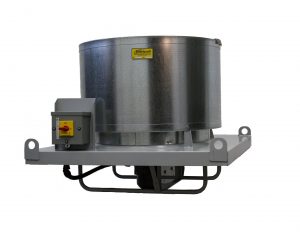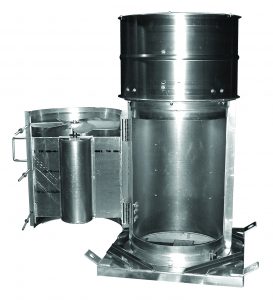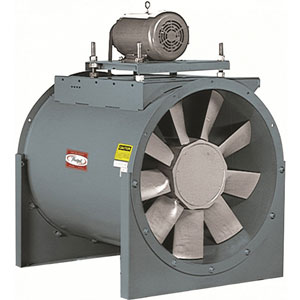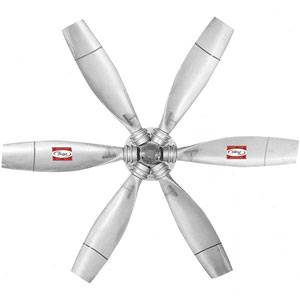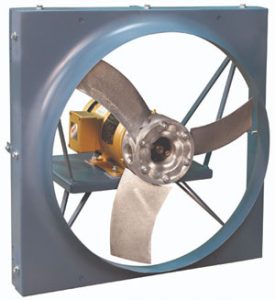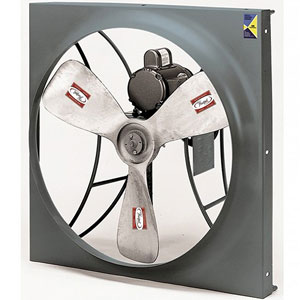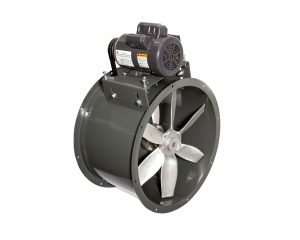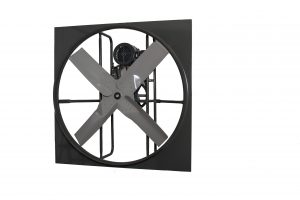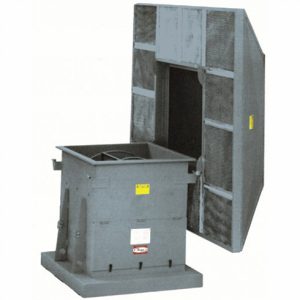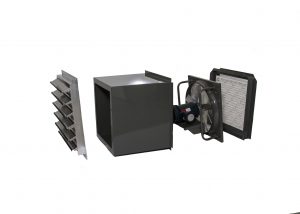Axial Fans
Axial flow fans or industrial axial fans use a propeller to draw the air into the fan then discharge it in the same axial direction which makes them beneficial for small space constraints. The way these fans work is like the propeller on an airplane: the fan blades generate an aerodynamic lift that pressurizes the air. Axial fans are typically selected where large volumes of clean air need to be moved against low static pressures. There are optional designs where vanes are added to the standard housing configuration to allow the propeller to generate greater static pressure. They can be used in varying environments as their construction is of painted carbon steel, stainless steel, aluminum or FRP (fiber-reinforced polymer).
Axial fans are commonly used for ventilation purposes by moving large amounts of air against minimal resistance through workplaces creating a desirable air change per hour to refresh air quality or modulate temperature. They are also used in process applications where axial flow is desired and static pressure is not excessive. Based on their placement in the duct system, they can be used in either a supply or exhaust configuration.
Examples Where axial fans are used:
- Paint Booth Exhaust
- Supply Ventilation
- Warehouse Exhaust Ventilation
- Heat Relief
- Process & Spot Cooling
- Wastewater Pump Station
Terminology for industrial axial fan designs:
- Wall, Panel, or Ring Fan
- Duct and Duct Axial Fans
- Vane Axial Fan (adjustable pitch)
- Hooded and Recirculating Roof Ventilator
- Upblast Roof Exhauster
- Supply Intake Fan
- Smoke Ventilator
- Mine Duty Fan
- Marine Duty Fan
- Tube Axial Fan
- Personnel Cooler
- Air Circulators
Axial Fans
